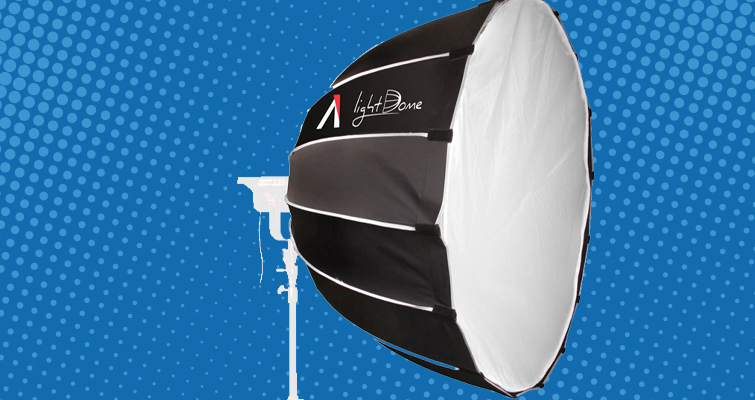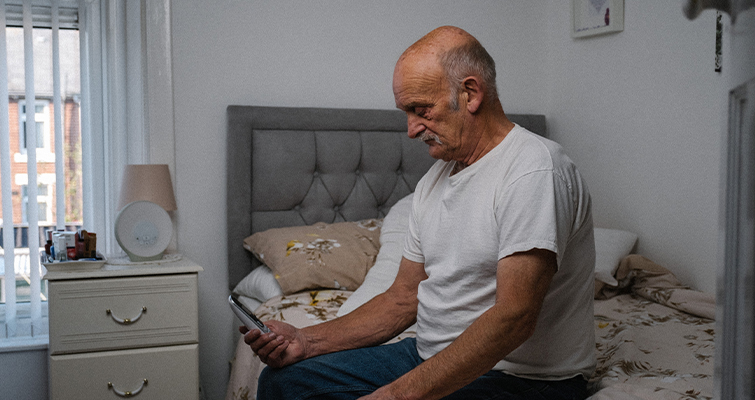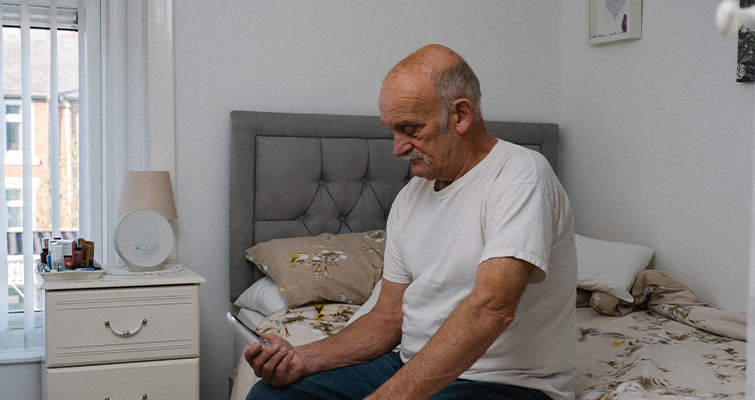
Lighting Modifiers: Aputure Light Dome Vs. Aputure Lantern
Let’s look at the differences between two light modifying tools to be used with Aputure’s 120 and 300 lines.
While the Light Dome and Lantern are both light-modifying tools that soften and evenly spread hard light, there are significant differences between the two tools. But, because they look (and cost about) the same, some new filmmakers may find themselves asking what those differences are. Let’s take a look.
What Is the Light Dome?
The Light Dome is Aputure’s offering for a softbox. However, unlike a conventional softbox that (as by name) is rectangular, the Light Dome is circular. By design, this “wraps” the light around the subject, avoiding any unwanted spill into the background. Because the dome is deep (twenty-four inches deep), it ensures a tighter, more focused beam with a reflective interior.

Unlike a conventional softbox, Aputure’s Light Dome has a circular structure. Background image via Aleksandr Andrushkiv.
As the Light Dome has a large thirty-five inch diffusion sheet, it not only produces gorgeous soft light, it also creates the perfect eye-light for interview subjects.
As such, you’d typically use this light modifier when illuminating people or objects. Additionally, the Light Dome II has a gel holder, allowing you to add a creative flair to the soft lights. If you need to get in close, and find the light has become a touch too hard or that there are visible lines from the diffusion fabric being folded, the Light Dome also ships with an internal diffuser that will significantly soften the light again.
It should be noted that the Light Dome II also ships with two diffusion sheets of 1.5 and 2.5 stops. All iterations of the Light Dome (and the Lantern) use a Bowens mount, making it accessible for a wide variety of lights. The Light Dome retails for $149, while the Light Dome II retails for $219.
What Is the Lantern?
In 2019, Aputure announced the $100 Aputure Lantern, an additional lighting modifier to run alongside their Light Dome selection. Being offered as the cheapest soft light diffusion addition, many looking to keep their production budget low may opt for the lantern over the light dome. However, while they look similar and (ultimately) do the same thing — diffuse light — the light’s disbursement is very different.

Keep your production low-budget with Aputure’s Lantern. Background image via rogistok.
First, the Aputure Lantern is omnidirectional, which means precisely what you might think — light emits from all directions (except for the back of the light, of course). This means that it isn’t really a light modifier that you intend to control, you want it to distribute as directional as intended using a lantern.
Like China balls, they are ideal for table scenes that require evenly spread light across multiple participants. Just think, if you were to light a dinner table scene between three members of the family with three separate lights and a softbox/light dome, you’d need three individual light setups. With the Lantern, it’s one — positioned overhead.
However, if you need to modify the Lantern, it also ships with a four-section, fully adjustable, removable light-control skirt. So, if you did need to control the Lantern to predominantly point toward one angle, you could do so.
Additional Notes
Although I irregularly use the Aputure Light Dome (say once or twice every month), if I could, I’d leave it assembled all the time, as it’s a pain to set up (as are most softboxes) and leaving no light leaks can take a few minutes. Aputure, however, heard this criticism and made sure that with their second iteration of the Light Dome (the Light Dome II), it could be assembled and disassembled a lot quicker. In under a minute, in fact.
The Lantern is even quicker. I want to say it can be assembled and disassembled in seconds, but it’s likely a single second. This, and its smaller size, makes it perfect for run-and-gun scenarios when you need a quick blast of ambient light and don’t have time for a full setup.
How Do the Modifiers Differ?
In the shots below, the actor is positioned in a daylight interior, with strong natural light coming in from the window. As the direction is to have a high-key shot, we need to bring some fill light into the scene to save exposing for the light from the window. And, to equally avoid the highlights from the windows clipping if we were to expose for the interior ambiance.
Using an Aputure 120d powered to 75 and positioned at a 45-degree angle, with the Light Dome, we can see it does a great job of illuminating the subject with a soft cast and richly brings out the details of the actor.
Because of the light fall-off and projected shadows, it also looks like he’s being lit by a motivated light source—like a ceiling light. It’s nice, but it also feels quite dramatic.
However, using the 120d powered to 75 and positioned at a 45-degree angle, but with the lantern naturally facing down, this is how the composition fares.
While it’s the same light, at the same power, you’ll notice that the lantern modifier wholly alters the tone of the image. There’s no directional over light, rather a projection of equal ambient light, with few shadows and little contrast. There’s also no overall direction that the light is directed.
To Summarize
The Light Dome is the perfect modifier to illuminate your subject with a soft light that wraps around them, making it ideal for corporate shots, tutorial videos, conversation scenes, product shots, and even portrait photography.
As the Lantern has a 270-degree beam angle, it’s the preferable choice for creating soft, ambient lighting to illuminate an entire area instead of a single subject. This is useful for shots with numerous people, podcasts, open spaces, and because of the the light’s size, scenes that have small spaces.
While similar tools from the same company, they do produce different results.
For more on lighting, check out the articles below.
- Lighting a Scene Without Breaking the 180-Degree Rule
- Cinematography Tip: Lighting Techniques for Villains
- Tips for Building DIY Lighting Setups for Under $100
- Minimize Your Lighting Setups For Narrative Shoots
Cover background image via vectorplus.







